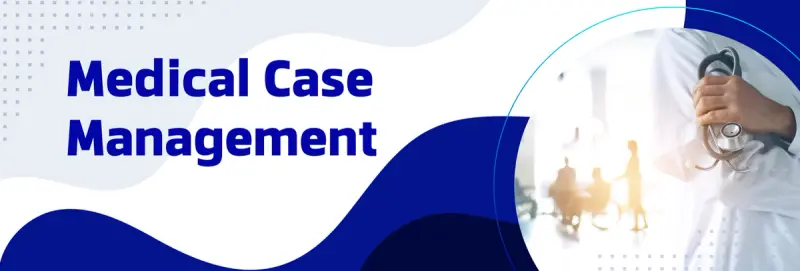Extend Case Management Capabilities with a Salesforce Lightning Web Component for Document Processing
By Laura Massingham | 2024 Aug 21

4 min
Tags
salesforce
case management
Case management involves the organized coordination of resources and activities to address specific challenges through structured workflows. While the definition may vary across industries, case management is essential wherever a systematic approach is needed to manage and resolve cases.
Given that documents and the data they contain are at the heart of any case management workflow, the ability to efficiently interact with those documents is vital. In this blog, we explore various case management examples, outline a typical workflow, and discuss how you can enhance the case management capabilities in Salesforce—where your data resides and your users are —to support more streamlined document collaboration.
Types of Case Management
There are endless case management use cases throughout every industry. Here are a few common examples:

A user submits a request through a portal, email, or even a phone call. The customer service representative will then follow up to resolve the problem and then document the case.
Key Requirements: The ability to take data arriving in multiple formats and save it into a common accessible form.

Medical case management helps ensure that patients receive the highest standard of care. It typically requires multiple healthcare providers, insurance companies, and the patient to collaborate. Of course, regulations, including HIPAA, are always a concern in healthcare, so it is critical that this information is not left vulnerable to third-party applications.
Key Requirements: Collaboration, accuracy, and privacy.

Another type of case management deals with sensitive information and a wide variety of file formats. A trial, for instance, could require storage, archiving, and collaboration on video, audio, PDFs, HTML files, and more. The ability to redact data is key for this type of case.
Key Requirements: The ability to deal with many different file types, including audio and video, plus true redaction.

Core to their business, insurance workers track, review, approve, or reject claims. Managers carefully look out for fraudulent claims while working to provide fast resolution to their customers. Resolution involves multiple parties, multiple files, and different document types.
Key Requirements: Uninterrupted workflows for rapid processing and extraction of data for fraud detection.

HR teams deal with many forms, signed documents, and email correspondence. Keeping those documents in a single system, providing access to those who need them, and designing simple workflows improves productivity.
Key Requirements: Simplicity, accuracy, and privacy for employees.
Check out the First Business Bank case study to see how they used the WebViewer Lightning Web Component (LWC) from Apryse to automate many back-office processes.

In government agencies, a case may refer to a specific issue, request, or transaction that requires evaluation and communication of a decision to citizens. Common examples include immigration applications, new drug approvals, government loan requests, and insider trading investigations.
Key Requirements: The ability to deal with complex documents, auto-fill forms, and inter-agency collaboration.
How does Case Management Work?
Case management is too complex to be reduced to a single workflow. For this blog, we focus on the impact of documents to highlight the importance of collaboration and reviews for case managers.
1. Case Creation, Assignment, and Information Gathering
Information from multiple sources is collected and organized for sharing, collaboration, and storage. It may come via email, a web portal, or even a phone call. The document could even be a physical document that arrives via fax and needs to be scanned into the system.
With a Salesforce-specific WebViewer that plugs in as a Lightning Web Component, users can open, create, view, and annotate these documents entirely within the Salesforce platform, ensuring all necessary information is captured and easily accessible.

2. Knowledge Worker Collaboration
If all relevant parties are granted access to the necessary information within the same application, collaboration is much more seamless. Knowledge workers check the status of issues, pull out all pertinent documents, and process them. With support for both PDF and DOCX files and conversion to even more file types, the WebViewer SDK enables collaborative review, approval, and editing of documents, allowing team members to comment, make changes, and track revisions. This ensures that everyone involved has the latest information and can work together effectively towards a resolution.

3. Take Action and Define Next Steps
Now, it's time to decide on the best course of action and the next steps. Decisions can be based on automated review and approval processes or manual conversations between parties. Documents play a crucial role in this phase, providing the necessary context and supporting information. The WebViewer SDK facilitates finalizing documents in DOCX and PDF, obtaining digital signatures, and conversion to PDF/A for long-term storage. Merging multiple PDFs into a single file is a common addition to this workflow. PDF portfolios are a powerful way of packaging documents while maintaining the original files. For sensitive information, true redaction is supported as well.
Since the Apryse WebViewer for Salesforce LWC does not require server-side dependencies or API calls, templates, and data are processed natively and reliably in your Salesforce solution on the fly. Confidential information never leaves your control.

4. Follow-up and Analysis of Future Outcomes
Depending on the industry, this could consist of a cost-benefit analysis, reports on clinical outcomes for healthcare, client satisfaction surveys, and risk profiles. When an organization has a strong grasp on its entire workflow, this data is utilized to measure future outcomes, improve resolution time on similar cases in the future, and provide guidance on how to offer a higher level of care for patients, clients, and customers alike. This is where Intelligent Document Processing (IDP) from Apryse can be helpful by capturing the data from various documents over time, converting it to JSON, making it available for analysis, and feeding it to a database where data-driven conclusions can be provided back to the teams.

Custom Solution or Packaged SaaS Offering: What's Right for You?
There are a lot of software solutions on the market for Case Management. Some organizations choose to use a packaged solution, while others want to supplement an existing system to meet their exact needs. Low Code Platforms have become a great middle ground, where developers can get the best of both worlds by combining the power of a platform like Salesforce or any of the leading BPM platforms while customizing the solution through plugins or SDKs (Software Development Kits) to fill the gaps.
This decision depends on multiple factors, including the complexity of the workflow, the industry you operate in, the privacy and data handling regulations you are subject to, and front-end collaboration requirements.
Workflow Needs
No two workflows are the same and the beauty of customizing document-related features is that you can build it to work for you. It is critical to ask the following questions before seeking out a solution. How many people are involved in each case? Are external decision-makers involved, how many documents are required, and how much online collaboration is expected of the team? How often will these workflows change over time? Your software solution should not only meet current needs but also adapt to the future demands of a growing organization.
Privacy regulations
Do your cases require the handling of PII? If so, security factors, the ability to redact data from documents, set user permissions, and provide audit trails are required.
Customer Interaction
How much does the end customer interact digitally as the case is resolved? Do you need a simple front-end where the user can fill out forms, share documents, and check for updates? The user experience will impact their satisfaction and speed to resolution.
Current Systems
If you have already made an investment in a low code and/or BPM platform, that is a natural place to start. Determine if it will fulfill this use case and then pressure test for future requirements. Consider the breadth of features required as you want to avoid the addition of multiple third-party applications that increase costs and raise security concerns.
Regardless of your workflow requirements, there is a wide array of solutions to choose from. As with any major software buying decision, a cross-functional team incorporating the end users should be involved in defining requirements and user acceptance testing.
Apryse provides a feature-rich suite of developer tools for those who want to supplement their current solution. Whatever your document collaboration requirements are, Apryse offers the tools you need to embed end-to-end document processing capabilities into any application whether it’s web-based, mobile, or a server-based application.
Wrap Up
To learn more about Salesforce integration, visit our Salesforce documentation section or watch our recorded webinar on integrating WebViewer into Salesforce. If you have any questions about implementing WebViewer in Salesforce, please feel free to get in touch, and we will be happy to help!
Tags
salesforce
case management

Laura Massingham
Director of Product Marketing
Share this post


